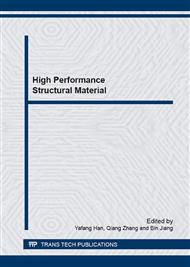p.304
p.310
p.319
p.324
p.333
p.337
p.343
p.349
p.356
Effect of Yttrium Content on the Ultra-High Cycle Fatigue Behavior of Mg-Zn-Y-Zr Alloys
Abstract:
In the super-long life regime, the fatigue behavior of as-extruded Mg-6wt%Zn-xY-0.8wt%Zr Mg alloys with Y content of 0, 1, 2 and 3 wt% have been investigated, respectively. The result indicated that for all measured S-N curves, a plateau existed in the regime of 5×106-108 cyc, and then the fatigue strength gradually decreased between 108 and 109 cycles. Therefore, only fatigue strength corresponding to 109 cycles can be determined. Compared with other alloys, the alloy with Y content of 2 wt% has the highest fatigue strength and its value is 105 MPa. SEM observations to fracture surfaces revealed that for all alloys, the fatigue crack mostly initiated at the surface or subsurface of samples failed within 106-109 cycles. Further observation indicated that the crack initiation was related with activated slip bands instead of phase particles and activated twins. Based on the measured results and Murakami equation, it demonstrates that the fatigue strength of alloys is more dependent on the hardness values.
Info:
Periodical:
Pages:
333-336
Citation:
Online since:
April 2015
Authors:
Keywords:
Price:
Сopyright:
© 2015 Trans Tech Publications Ltd. All Rights Reserved
Share:
Citation:


